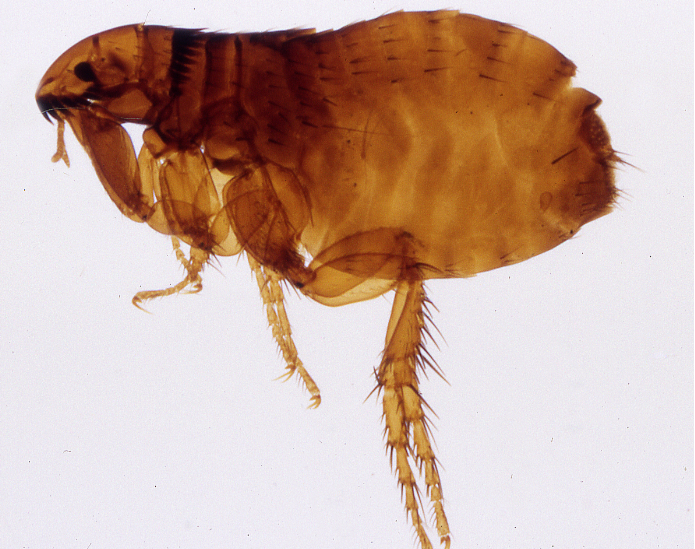
Introduction
Welcome to another enlightening article on “Flea Bites,” the blog that has become the go-to source for all things related to fleas and their behavior. Today, we’re tackling a question that has perplexed pet owners and homeowners alike: “Do fleas fly?” It’s crucial to get the facts straight on this issue, as it plays an integral role in devising an effective flea control strategy. There’s a lot of misinformation out there, so we’re here to set the record straight. We’re going to delve into the science behind flea anatomy, debunk common myths about their mobility, and provide you with actionable insights that are backed by scientific research. Understanding the nuances of flea movement not only equips you for better flea control but also saves you from wasted efforts and needless worry.
This comprehensive guide draws its inspiration from entomological research, such as the work done by The Royal Entomological Society, which emphasizes that fleas are adapted for jumping rather than flying. We’re here to offer you an authoritative perspective, rooted in science, to help you take control of your flea problems. So, let’s dive right in and explore this captivating topic.
This article is your one-stop resource for understanding the real story behind flea mobility. Keep reading to unlock the secrets and take control of your flea issues today.
The Anatomy of a Flea: What Science Says
When it comes to understanding whether fleas can fly or not, the best place to start is by examining their anatomy. Fleas are tiny, wingless insects, equipped with features that are specialized for their parasitic lifestyle. Let’s break down the specifics.
Physical Features of Fleas

Fleas measure often less than a quarter of an inch and have bodies that are laterally compressed, which lets them navigate easily through their host’s fur or feathers. They sport six long, powerful legs designed for jumping, not flying. Additionally, a hard, durable exoskeleton made of chitin gives them the rigidity they need for high-velocity jumps.
Comparison with Flying Insects
In contrast to flying insects like mosquitoes or flies, fleas lack wings. Flying insects have complex wing structures and muscles that allow them to navigate the air. A detailed study published by the Entomological Society of America describes how wing morphology in insects is specifically adapted for flight, something fleas are conspicuously missing. Thus, from a scientific standpoint, fleas simply don’t have the anatomical features that enable flight.
Summary: Fleas Are Not Built for Flight
To sum it up, while fleas are highly mobile, their mode of transportation is quite different from flying insects. They are built for impressive leaps that can span great distances relative to their body size, thanks to their powerful legs and resilient exoskeleton. This unique adaptation is what allows them to quickly locate and latch onto hosts.
Understanding the anatomy of a flea is fundamental to gaining insights into how they move, which in turn informs how we can effectively control and exterminate them. Far from being capable of flight, fleas are jumpers par excellence, and understanding this distinction is key to tackling flea infestations efficiently.
Unveiling the Flea’s Unique Mode of Transportation
Understanding how fleas move is instrumental in planning a successful eradication strategy. Fleas don’t fly, but they have their unique mode of transportation that’s just as effective for their needs. Let’s delve into the specifics.
The Power of Flea Legs: Jumping Versus Flying
Although fleas can’t fly, they are among nature’s most extraordinary jumpers. Their hind legs are robust and elastic, packed with resilin—a rubber-like protein—that stores energy. When a flea jumps, it releases this stored energy, propelling itself up to 150 times its body length in a single leap. The physics behind this impressive feat was explored in a study by Cambridge University, which found that the flea’s hind legs act like miniature catapults, enabling them to cover significant distances quickly.
Flea Behavior: How and Why They Jump
Fleas employ their remarkable jumping abilities for specific reasons. Their primary goal is to find a host to feed on, and the sensation of warmth, vibrations, or even the exhaled carbon dioxide from a potential host can trigger these high-velocity jumps. Once they sense a host nearby, they leap towards it with incredible accuracy, latching onto the skin to begin their parasitic feast.
The Intricacies of Flea Locomotion
Contrary to popular belief, fleas don’t have the capability to fly from one place to another. Instead, they rely on their extraordinary jumping skills, evolved over millions of years, to move about and find hosts. Their unique mode of transportation is tailored to their parasitic lifestyle, making them highly effective at what they do.
Grasping the intricacies of how fleas move is crucial for anyone looking to control or eradicate a flea infestation. Being knowledgeable about their jumping capabilities allows you to implement targeted strategies, saving you both time and resources in your battle against these persistent pests.
Debunking Myths: Common Misconceptions about Fleas
Misinformation can lead to ineffective flea control measures, and there’s no shortage of myths surrounding these tiny pests. In this section, we’ll address some of the most common misconceptions about flea mobility and set the record straight.
Myth 1: Fleas Have Wings
A widespread myth claims that fleas have wings, which is false. As mentioned earlier, the anatomy of a flea doesn’t support flight because they don’t have wings. People may mistake their impressive jumping ability for short flights, fueling the belief that fleas can fly.
Myth 2: Fleas Can Fly Short Distances
Another common myth is that fleas can fly, but only for short distances. This misconception is likely fueled by their rapid movement and the difficulty in tracking them as they jump from one place to another. However, scientific literature, including articles from the Journal of Medical Entomology, consistently emphasizes that fleas are incapable of flight. They are jumpers, pure and simple.
Myth 3: Flea Infestations Spread Quickly Because They Can Fly
Many people believe that rapid infestations occur because fleas can fly from host to host. The truth is that fleas spread quickly because of their incredible jumping abilities and their lifecycle, which can produce a large number of offspring in a short period. Understanding this can help in devising a targeted approach for flea control.
Setting the Record Straight: Correcting These Fallacies
It’s crucial to dispel these myths to effectively tackle a flea problem. Believing that fleas can fly may lead you to employ improper extermination methods, resulting in persistent infestations and unnecessary distress.
By debunking these myths, we equip you with the accurate information needed for effective flea control. Knowledge is power, and in this case, the power to rid your life of these pesky parasites.
Effective Flea Control: Tailoring Strategies Based on Mobility
Now that we’ve cleared the air on whether fleas can fly, let’s focus on actionable solutions that you can implement. Understanding a flea’s true mode of transportation allows us to design strategies that are both effective and efficient.
Using Chemical Treatments Wisely
Traditional chemical treatments like flea sprays and foggers can be more effective when you understand that fleas don’t fly but can jump great distances. Instead of indiscriminately spraying an area, focus on spots where fleas are likely to land after their leaps, such as pet bedding, rugs, and the lower parts of furniture. Targeting these specific zones can dramatically improve the effectiveness of chemical treatments.
Environmental Controls: Barriers and Traps
Flea traps that use heat and light to attract fleas can be remarkably effective, given that fleas are drawn to warmth and will jump towards these traps. Creating physical barriers using diatomaceous earth or specially designed flea-repellent mats can also limit how far fleas can travel by jumping, making it easier to contain and eradicate an infestation.
Professional Extermination: When to Call the Experts
For severe infestations, a professional extermination service may be necessary. Knowing that fleas can’t fly helps exterminators tailor their approach, making it far more effective. They can implement targeted strategies that use a combination of chemical and non-chemical treatments to eliminate fleas at all life stages. Websites like the National Pest Management Association can guide you in selecting a reputable extermination service.
Summary: The Importance of Targeted Flea Control
Effective flea control isn’t just about exterminating adult fleas; it’s about creating an environment where they can’t thrive. Understanding that fleas are expert jumpers but poor fliers allows us to implement targeted control measures, which are not only more effective but also often less disruptive and less costly.
This comprehensive guide has armed you with scientific facts and debunked the myths. You now have the tools to tackle your flea problems with surgical precision. In this battle, your strongest weapon is knowledge, and we’re confident that you are well-prepared to declare victory against these irritating pests.
Conclusion: The Final Verdict on Flea Mobility and Next Steps
As we wrap up this thorough exploration, let’s summarize the crucial points and suggest some next steps for you to take in dealing with your flea problems. Armed with accurate information, you’re well-positioned to approach flea control with confidence and effectiveness.
Revisiting the Central Question: Do Fleas Fly?
No, fleas do not fly. Their anatomy is uniquely tailored for jumping, enabling them to cover significant distances relative to their size. This powerful jumping ability serves them well in finding hosts and spreading infestations, but they are not equipped for flight.
Key Takeaways for Effective Flea Control
1. Understanding Anatomy: Knowledge of a flea’s physical features can lead to more targeted and effective control methods.
2. Debunking Myths: Dispelling common myths can save time and effort, ensuring that your control measures are properly directed.
3. Targeted Treatments: Whether using chemical sprays, environmental barriers, or professional services, a focused approach is more likely to yield results.
Recommended Next Steps
- Assessment: Evaluate the extent of your flea problem. Are they localized to specific areas, or is it a full-blown infestation?
- Implementation: Choose the appropriate control methods based on your assessment. This could range from DIY solutions to professional extermination.
- Monitoring: Keep an eye on the affected areas to evaluate the effectiveness of your chosen methods and adapt as necessary.
For additional guidance, the Centers for Disease Control and Prevention offers excellent resources on controlling and preventing flea infestations.
Final Thoughts
In the fight against fleas, knowledge truly is power. By understanding that fleas are not fliers but exceptional jumpers, you can direct your efforts in a more effective way. We hope this comprehensive guide has been both enlightening and useful, setting you on the path to a flea-free life. Thank you for trusting “Flea Bites” as your reliable source for flea-related information.